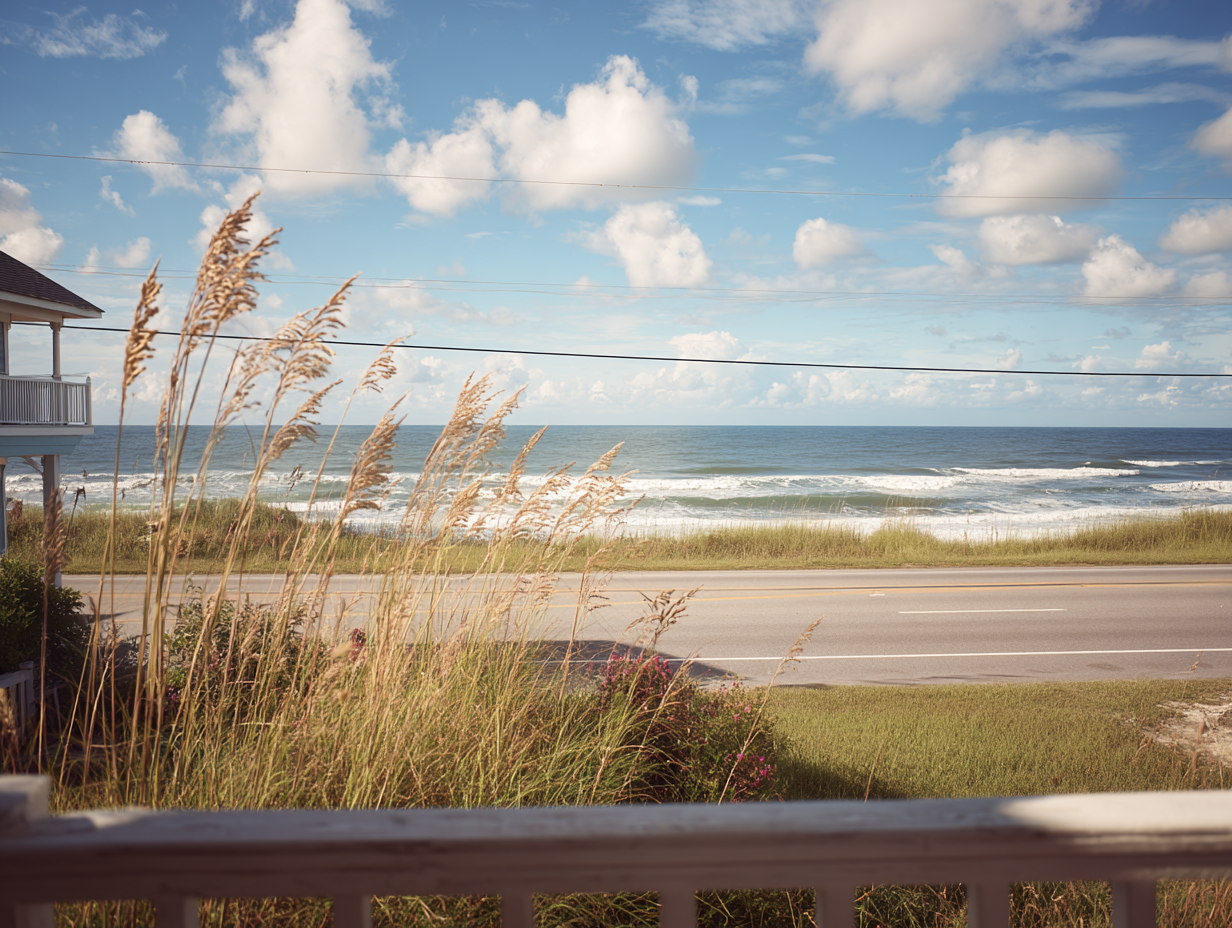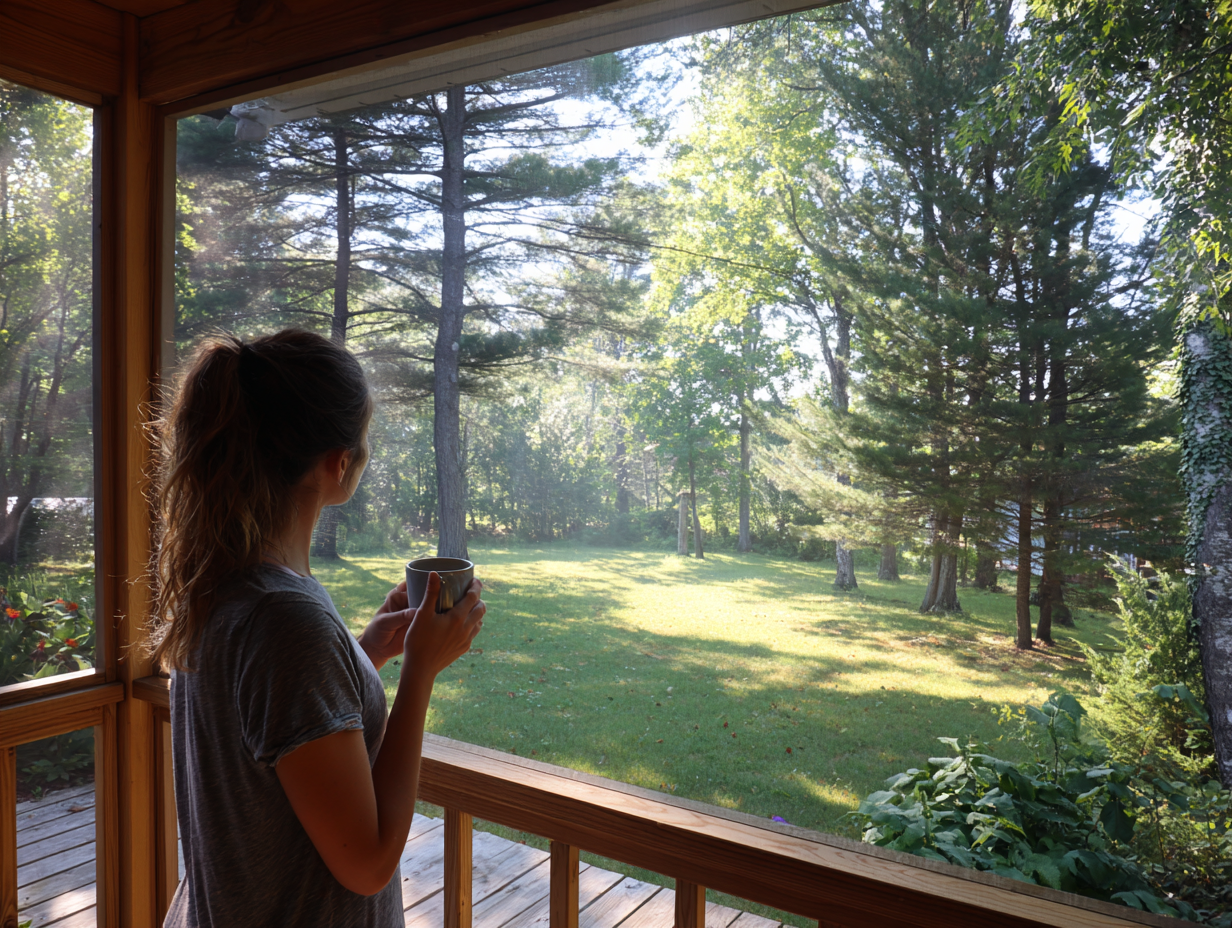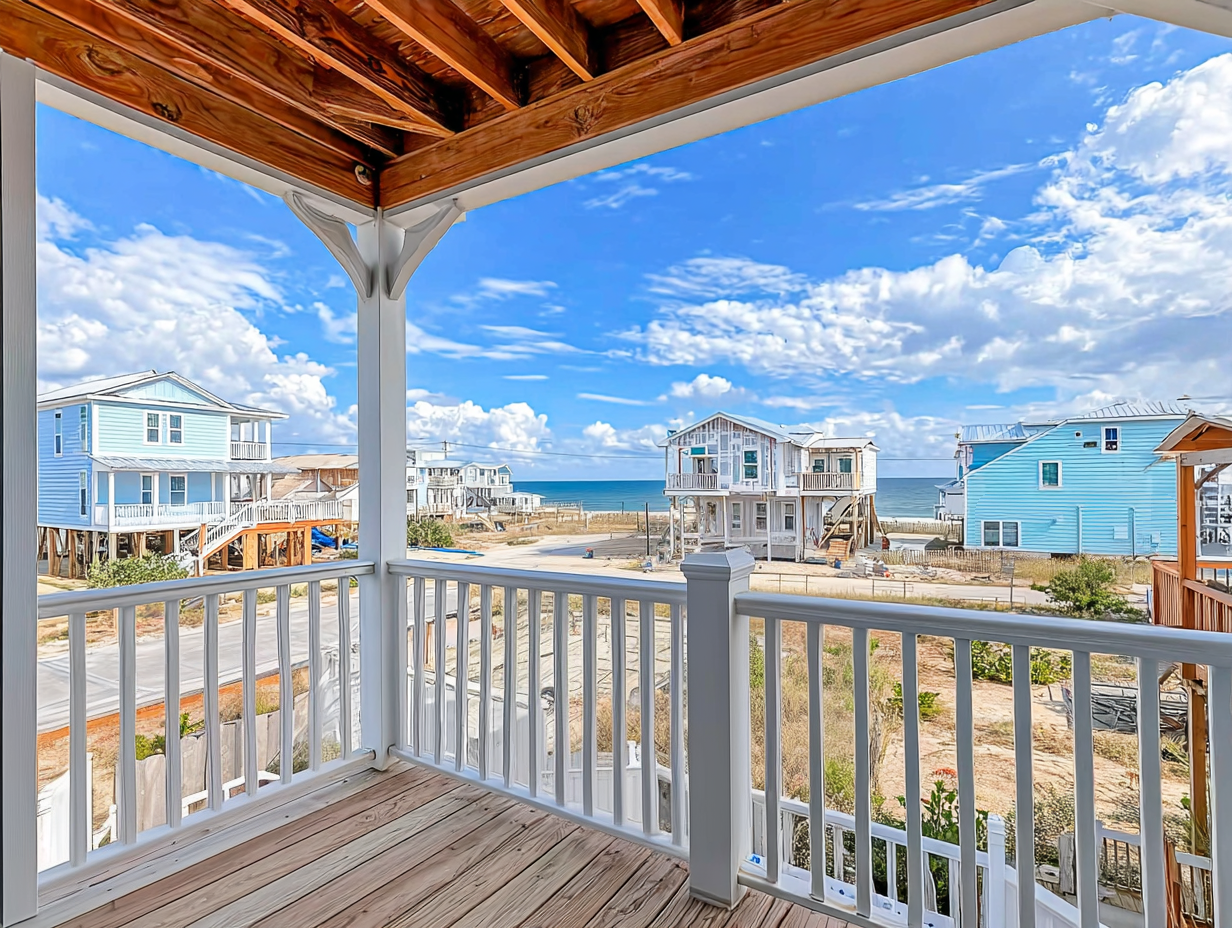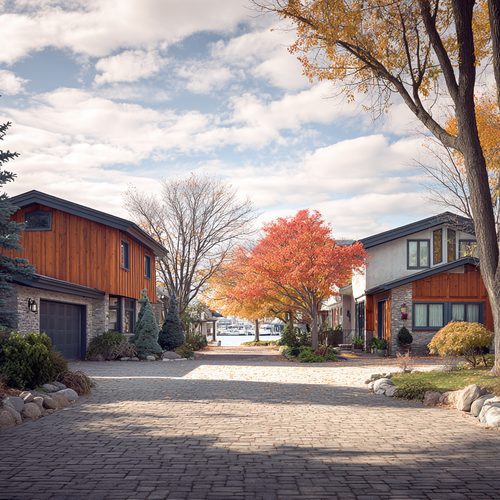North Carolina is home to some of the most beautiful landscapes on the East Coast. From sweeping Atlantic Ocean vistas in the Outer Banks, to tranquil Intracoastal Waterway views in Wilmington, to rolling countryside in Pender County, views are a big selling point for many homes here. But if you buy a property because you love the view, an important question arises: Do you have the right to keep that view forever—or could it be blocked one day?
The truth may surprise you. In most cases, unless there are specific legal protections in place, a scenic view is not guaranteed. The open field across the street could turn into a new subdivision, that wooded lot behind you could be cleared, or the neighbor’s one-story cottage could become a towering two-story home.
This article breaks down how “view rights” work in North Carolina, what local zoning laws say, and what real homeowners have experienced—so you can make informed decisions before (and after) you buy.
What Are View Rights?
In real estate, “view rights” refer to a property owner’s legal ability to maintain a specific scenic view—such as the ocean, marsh, river, mountains, or even city skyline. These rights can sometimes be protected through legal agreements, such as:
Easements – A legal document that grants the right to keep certain areas clear of obstructions.
Restrictive Covenants – HOA or developer-imposed rules that limit building height, tree growth, or other factors that could block a view.
Zoning Restrictions – Local ordinances that control how tall buildings can be, how far they must be set back from property lines, and how land can be used.
The challenge is that North Carolina does not have an automatic, statewide “right to a view.” This means that unless your property is in an area with specific protections, there’s no legal recourse if someone builds in a way that blocks your scenic outlook.
Why Views Matter So Much in North Carolina
Many North Carolina homebuyers—especially those in coastal and waterfront communities—are willing to pay a premium for a property with a view. The Wilmington area, for example, has neighborhoods where waterfront and water-view homes can command hundreds of thousands more than their inland counterparts.
The same is true in the mountains of western NC, where a “long-range mountain view” is a major selling feature. Even suburban communities near parks or golf courses see higher values for homes with unobstructed sightlines.
But because those views are tied to desirability and property value, losing one can feel like a financial and emotional gut punch.
Local Zoning Laws in North Carolina: How They Affect Your View
Zoning laws vary by municipality, but in general, they control:
Building Height Limits – How tall a structure can be built.
Setback Requirements – How far buildings must be from property lines.
Use Restrictions – What kind of structures are allowed (residential, commercial, etc.).
For example:
Wilmington, NC: Residential building height in many zones is capped at 35 feet, but exceptions can be made for certain features (like church steeples or rooftop decks).
New Hanover County: Some waterfront areas have strict height limits, while others allow taller homes if lot coverage is limited.
Brunswick County: Beach communities like Oak Island and Holden Beach often have height limits, but they may still allow two- and three-story homes that could block a previously clear ocean view.
Pender County: Rural zones may have fewer height restrictions, meaning future construction could easily impact views.
The important takeaway: Zoning protects general development patterns, but it’s not designed to protect an individual’s view unless that view is explicitly tied to a zoning district’s purpose.
HOA Rules and Private Covenants
If your home is in a planned community, you might have more protection—but it depends on the rules.
Some HOAs have “view corridor” rules, especially in golf course or waterfront neighborhoods, which prohibit certain tree heights or home additions.
Others enforce building design guidelines that limit roof heights or require that new builds follow the neighborhood’s original sightline plan.
However, these rules can change over time. If the HOA board votes to alter height limits, protections can weaken. It’s important to review your HOA’s Covenants, Conditions, and Restrictions (CC&Rs) before buying.
Tree Growth and View Obstruction
In many parts of North Carolina, especially along the coast, fast-growing trees like live oaks, pines, and wax myrtles can change your view in just a few years.
Unless you have an easement granting you the right to trim or remove vegetation on someone else’s land, you typically cannot force a neighbor to cut down trees that block your view. Tree laws focus on property boundaries and hazard prevention—not preserving scenery.
Real-World North Carolina Examples
Wrightsville Beach New Construction
A couple purchased a second-row beach home with a partial ocean view over a vacant lot. Two years later, the lot sold, and a three-story home went up—completely blocking their view. Because the construction followed local height limits and setbacks, there was nothing the original homeowners could do.
Golf Course Communities in Brunswick County
Many homes sold in the early 2000s with unobstructed fairway views. As landscaping matured, tall ornamental trees were planted for privacy. Some HOAs enforced trimming rules, but in others, views disappeared, and property values dipped.
Downtown Wilmington River Views
Condos with Cape Fear River views once had an unobstructed sightline to sunsets over the water. Recent commercial development brought taller structures, changing the skyline. While city planners worked to maintain some public view corridors, individual unit owners saw changes they couldn’t prevent.
Steps Buyers Should Take Before Purchasing a “View” Property
If you’re buying in North Carolina and the view is a major selling point, you can protect yourself by doing some homework:
Check the Zoning Map – Contact the local planning department to see what’s allowed on neighboring parcels.
Research Pending Permits – Ask if there are approved building plans for nearby lots.
Read HOA or Community Rules – Look for height limits, tree restrictions, or view corridor protections.
Ask About Easements – See if there are recorded view easements for your property or the land in front of it.
Visit at Different Times of Year – Seasonal foliage changes can reveal how much of your view is permanent.
Hire a Local Agent Who Knows the Area – An experienced real estate agent can often spot risks you might miss.
What to Do If Your View Is Threatened
If you hear that a new building, tree planting, or addition could block your view, act early:
Talk to the Neighbor or Builder – Sometimes there’s room for compromise on building height or tree placement.
Review Legal Documents – Check your deed, HOA rules, and zoning ordinances.
Attend Planning Meetings – In North Carolina, proposed developments often require public hearings where residents can voice concerns.
Seek Legal Advice – A real estate attorney can tell you if you have any enforceable rights.
Keep in mind that while public opposition can sometimes alter a development plan, it’s rarely enough to stop a project if it follows all local regulations.
Special Cases: Coastal and Waterfront Properties
Coastal homes in North Carolina face additional layers of regulation from the Coastal Area Management Act (CAMA) and the NC Division of Coastal Management. These agencies regulate setbacks from dunes, marshes, and waterways—which can indirectly protect views by limiting how close new structures can be to the water.
However, CAMA rules are about environmental protection, not personal view preservation. A compliant structure that meets setback rules can still block your view.
Bottom Line: In North Carolina, Views Are Rarely Guaranteed
While the state offers some of the most stunning scenery in the country, the only surefire way to protect your view is through recorded legal protections—like easements or covenants—or by owning the land between you and what you want to see.
For buyers, this means doing thorough research before making an offer. For current homeowners, it means staying informed about local development and community rule changes.
A view can be priceless, but in North Carolina real estate, it’s also perishable. Knowing the rules, understanding the risks, and working with knowledgeable professionals can make the difference between enjoying that view for decades—or watching it disappear overnight.
As always, if you have any questions about your legal rights as a property owner, we recommend you consult with a real estate attorney.






